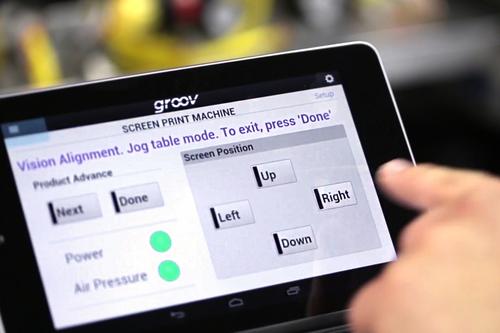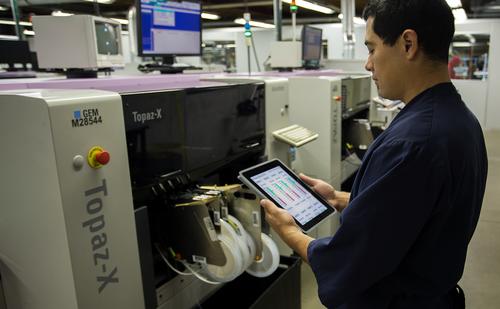October 15, 2014

Increasingly, automation engineers and technicians are seeing the value of using commercial, off-the-shelf (COTS) mobile devices for remotely accessing equipment, commissioning and/or maintaining systems, and providing inexpensive machine operator interfaces.
By taking a look at mobile trends in business and the pros and cons of using COTS mobile devices in industrial automation, you can assess whether mobile devices, either off-the-shelf or not, are suited to your automation applications.
Mobile means business
In 2009, Intelfound employees bringing their personal mobile devices to work, and about two years later the company projected that by 2014, 70% of their employees would be using their own devices in their jobs. Other companies noticed the same trend, dubbed "bring your own device" or BYOD.

Employees have good reasons for wanting to use their mobile devices in business. These devices are easy to use, familiar, powerful, and offer capabilities not available through bulky computers or even laptops. Over the last five years, computer technologies have advanced so quickly for consumers, especially in mobile devices, that consumer computing began driving business computing for the first time.
The BYOD trend has been met with intense worry as well as great enthusiasm. Company and employee concerns about employees using their own devices at work are real: network security, privacy, who pays for the device's data plan, and so on. We all have our own ideas about whether employees' personal devices belong at work.
But no matter which side of the debate you stand on, the rapid growth of this trend shows us something important: the power of COTS mobile devices to make a difference in business. Mainstream smartphones and tablets create new opportunities to simplify our jobs and streamline our tasks, and we don't want to do without them.
Considerations for using COTS mobile in automation
Mobile is part of our future in automation, and if you haven't thought much about it, now is a good time to start. When you're considering using mobile devices in industrial settings, you'll want to think about four factors: environment, safety, security, and connectivity.
Industrial environments vary widely. Harsh environments can kill a mobile device. Drop an unprotected iPad onto concrete and you've got a problem. Use a smartphone in extreme heat, severe cold, or over 95% humidity, and it won't last long. Water and chemicals corrode. Dust and dirt scratch and clog screens and buttons.
If an environment is harsh, you may need to look at ruggedized devices. Mobile manufacturers have developed a variety of ruggedized tablets that meet military standards (such as the US Department of Defense MIL-STD-810) and/or qualify for high IP (International Electrotechnical Commission Ingress Protection) ratings.
MIL-STD-810 covers shock, vibration, altitude, humidity, extreme temperatures, dust, and several other conditions.
IP ratings are usually two-digit numbers, the first number for dust (solids) and the second for water (liquids). For example, an IP rating of 65 means a device is dustproof and can protect against low-pressure water jets from any direction.
But many industrial environments don't require this kind of protection. And ruggedized mobile devices are not only significantly more expensive, but also rarely match the features we appreciate and expect on our personal devices: multitasking, gestures beyond the basics, built-in sensors, voice recognition, cameras, communications through email and texting, and much more.
About the Author(s)
You May Also Like





